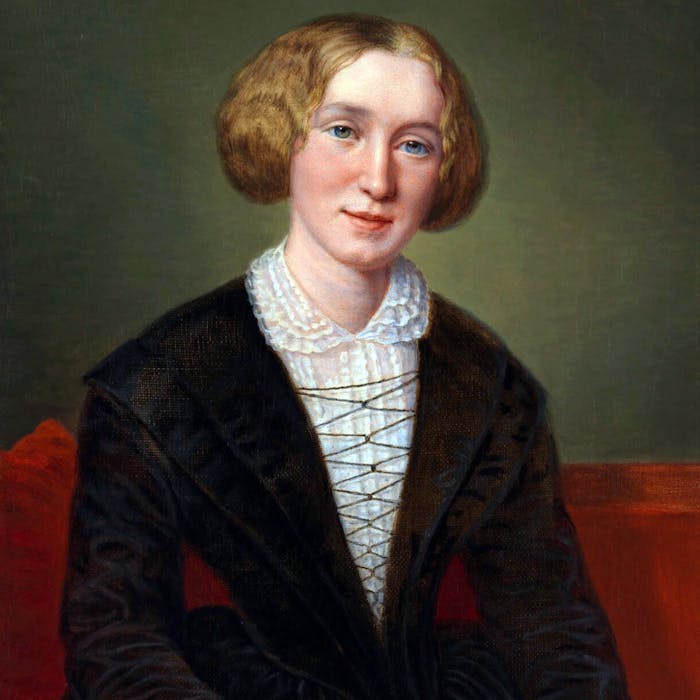
'George Eliot' - Victorian novelist Mary Ann Evans
Mary Ann Evans, writing under the pseudonym of George Eliot, was a highly acclaimed Victorian novelist, famed for writing 'Middlemarch' and 'The Mill on the Floss'. But it wasn’t just her written works and her assumed identity that brought her fame; she also courted controversy in her personal life.
Mary Ann Evans was born in Nuneaton in 1819 on the Arbury Hall estate, where her father was manager. Evans' mother died when she was sixteen, and when she was twenty-one the family moved to Coventry. Here, she befriended the influential Bray family, who introduced her to a new circle of people, and a different way of thinking. She questioned her faith which caused problems with her father. However she kept house and looked after him until he died in 1849 when she was 30 years old.
Shortly after, Evans moved to London and became Assistant Editor of a left wing journal called The Westminster Review. In the capital, she met philosopher and critic George Henry Lewes, and in 1854 they moved in together. Lewes was already married, which attracted scandal in the 19th century. Mary's brother Isaac ceased contact with her. Lewes was unable to divorce his wife, because, as he had allowed himself to be named as father on the birth certificates of illegitimate children - he was considered compliant in adultery.
However, Mary Ann Evans began to call herself Mary Ann Evans Lewes, and to refer to George as her husband. They remained together until his death 24 years later.
Her first complete novel was Adam Bede, published under the alias George Eliot in 1859. It was a great success and there was much speculation over the actual identity of the new author. In the end Mary Ann stepped forward and admitted to being George Eliot. She had adopted the pseudonym because, in one of her essays, she had criticised female writers of the time for trivial plots. She wanted to ensure her work was taken seriously, so she created a male pen name. She wrote seven novels altogether, as well as various other works.
After Lewes died in 1878, Eliot found a new partner in banker John Walter Cross, who was 20 years her junior. They married in 1880, and this legal marriage helped to reconcile her with her brother.
After their honeymoon, the couple moved to Chelsea, but Eliot fell ill and died in the same year as her marriage, in 1880, aged 61. She is buried at Highgate Cemetery, next to George Lewes.
Further reading
Links to external websites are not maintained by Bite Sized Britain. They are provided to give users access to additional information. Bite Sized Britain is not responsible for the content of these external websites.
